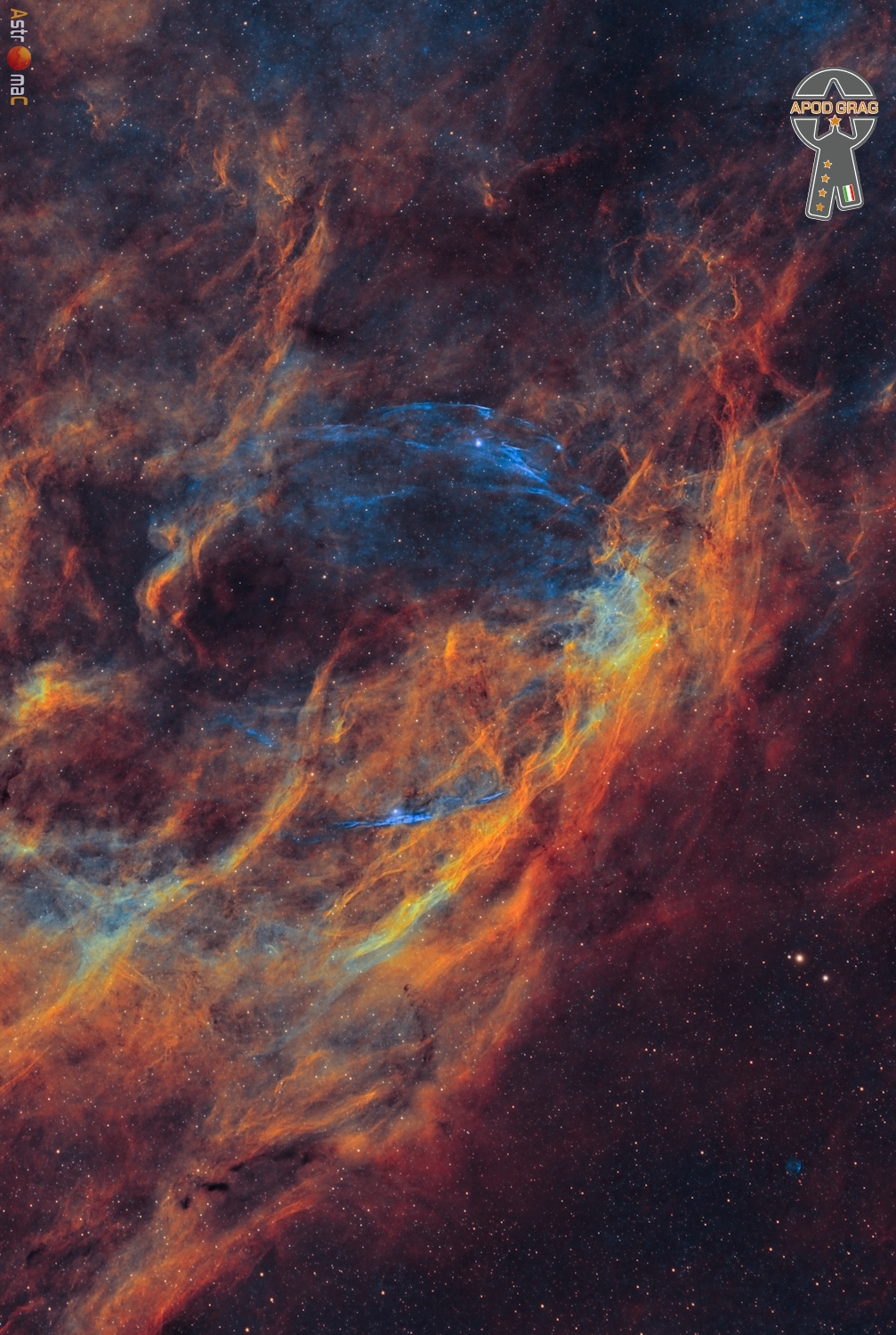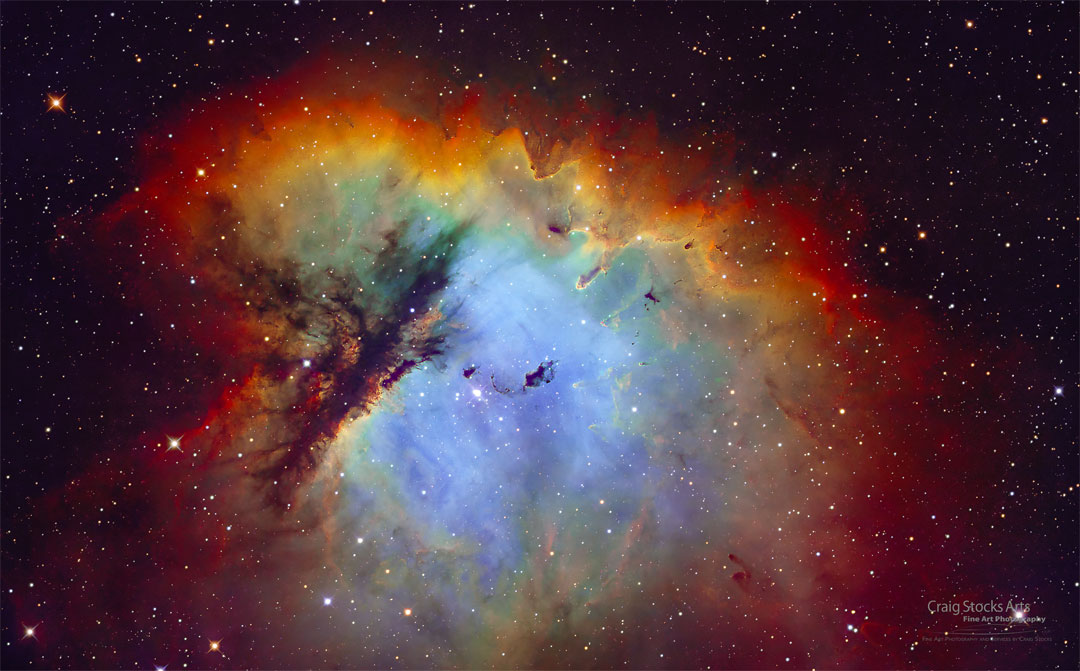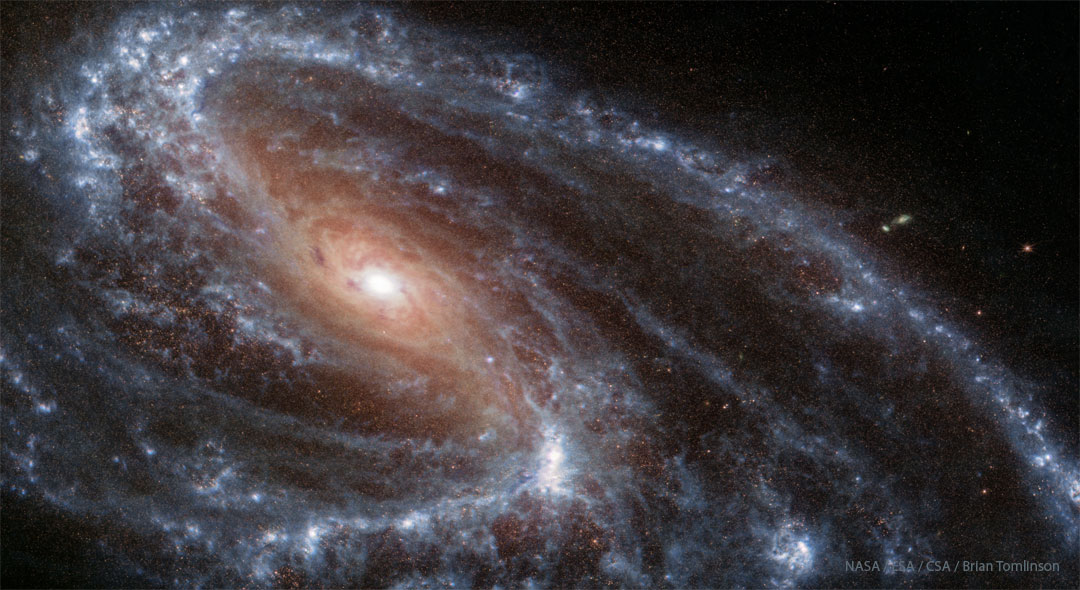Blog
The ghost of a long-dead star, the W63 supernova remnant shines like a faint cosmic smoke-ring along the plane of the Milky Way galaxy toward the northern constellation Cygnus the swan. Its wraithlike appearance is traced against the region’s rich complex of interstellar clouds and dust by an eerie blue glow. Spanning over four full moons on the sky, the beautiful image is a telescopic mosaic in twelve panels that combines 100 hours of exposure time using narrow band filters. It shows characteristic light from ionized atoms of sulfur, hydrogen and oxygen in red, green, and blue hues. Likely over 5,000 light-years away, the visible part of the still expanding shell supernova remnant is around 150 light-years in diameter. So far no source has been identified as with the remains of W63’s original star. Light from the star’s supernova explosion would have reached Earth over 15,000 years ago.

Wilton Lewis Felder (August 31, 1940 – September 27, 2015) was an American saxophone and bassplayer, and is best known as a founding member of the Jazz Crusaders, later known as The Crusaders. Felder played bass on the Jackson 5‘s hits “I Want You Back” and “ABC” and on Marvin Gaye‘s “Let’s Get It On“.
Felder was born on August 31, 1940, in Houston, Texas and studied music at Texas Southern University.Felder, Wayne Henderson, Joe Sample, and Stix Hooper founded their group while in high school in Houston. The Jazz Crusaders evolved from a straight-ahead jazz combo into a pioneering jazz-rock fusion group, with a definite soul music influence. Felder worked with the original group for over thirty years, and continued to work in its later versions, which often featured other founding members.
Felder also worked as a West Coast studio musician, mostly playing electric bass, for various soul and R&Bmusicians, and was one of the in-house bass players for Motown Records, when the record label opened operations in Los Angeles in the early 1970s. He played on recordings by the Jackson 5 such as “I Want You Back“, “ABC” and “The Love You Save“, as well as recordings by Marvin Gaye including “Let’s Get It On” and “I Want You“. He also played bass for soft rock groups like Seals and Crofts. Also of note were his contributions to the John Cale album Paris 1919, Steely Dan‘s Pretzel Logic (1974), and Billy Joel‘s Piano Man and Streetlife Serenade albums. He was one of three bass players on Randy Newman‘s Sail Away(1972) and Joan Baez‘ Diamonds & Rust. Felder also anchored albums from Grant Green, Joni Mitchell and Michael Franks.
more...Paul Winter (born August 31, 1939) is an American saxophonist, composer, and bandleader. He is a pioneer of world music and earth music, which interweaves the voices of the wild with instrumental voices from classical, jazz and world music. The music is often improvised and recorded in nature to reflect the qualities brought into play by the environment.
Winter was born in Altoona, Pennsylvania, United States. He studied piano and clarinet, then fell in love with saxophone in the fourth grade. He started the Little German Band with his schoolmates when he was twelve, then a Dixieland band, and a nine-piece dance band known as The Silver Liners. He became enthralled by big bands and bebop bands of the 1950s. After graduating from Altoona Area High School in 1957, he spent the summer on a tour of state fairs in the Midwest with the conductor and members of the Ringling Brothers Circus Band.
more...Sir George Ivan Morrison OBE (born 31 August 1945), known professionally as Van Morrison, is a Northern Irish singer, musician and songwriter whose recording career spans seven decades.
Morrison began performing as a teenager in the late 1950s, playing a variety of instruments including guitar, harmonica, keyboards and saxophone for various Irish showbands, covering the popular hits of that time. Known as “Van the Man” to his fans, Morrison rose to prominence in the mid-1960s as the lead singer of the Northern Irish R&B band Them, with whom he wrote and recorded “Gloria“, which became a garage bandstaple. His solo career started under the pop-hit oriented guidance of Bert Berns with the release of the hit single “Brown Eyed Girl” in 1967. After Berns’s death, Warner Bros. Records bought Morrison’s contract and allowed him three sessions to record Astral Weeks (1968). While initially a poor seller, the album has become regarded as a classic. Moondance (1970) established Morrison as a major artist, and he built on his reputation throughout the 1970s with a series of acclaimed albums and live performances.
Much of Morrison’s music is structured around the conventions of soul music and early rhythm and blues. An equal part of his catalogue consists of lengthy, spiritually inspired musical journeys that show the influence of Celtic tradition, jazz and stream of consciousness narrative, such as the album Astral Weeks. The two strains together are sometimes referred to as “Celtic soul”, and his music has been described as attaining “a kind of violent transcendence”.
Morrison’s albums have performed well in Ireland and the UK, with more than 40 reaching the UK top 40. He has scored top ten albums in the UK in four consecutive decades, following the success of 2021’s Latest Record Project, Volume 1. Eighteen of his albums have reached the top 40 in the United States, twelve of them between 1997 and 2017. Since turning 70 in 2015, he has released – on average – more than an album a year. He has received two Grammy Awards, the 1994 Brit Award for Outstanding Contribution to Music, the 2017 Americana Music Lifetime Achievement Award for Songwriting and has been inducted into both the Rock and Roll Hall of Fame and the Songwriters Hall of Fame. In 2016, he was knighted for services to the music industry and to tourism in Northern Ireland.
more...Look through the cosmic cloud cataloged as NGC 281 and you might miss the stars of open cluster IC 1590. Formed within the nebula, that cluster’s young, massive stars ultimately power the pervasive nebular glow. The eye-catching shapes looming in the featured portrait of NGC 281 are sculpted dusty columns and dense Bok globules seen in silhouette, eroded by intense, energetic winds and radiation from the hot cluster stars. If they survive long enough, the dusty structures could also be sites of future star formation. Playfully called the Pacman Nebula because of its overall shape, NGC 281 is about 10,000 light-years away in the constellation Cassiopeia. This sharp composite image was made through narrow-band filters. It combines emission from the nebula’s hydrogen and oxygen atoms to synthesize red, green, and blue colors. The scene spans well over 80 light-years at the estimated distance of NGC 281.

more...
Rodney Jones (born August 30, 1956) is an American jazz guitarist who worked with Jaki Byard, Chico Hamilton, Dizzy Gillespie, and Lena Horne and as a bandleader. He is cited as a jazz guitarist who uses modern quartal harmony. Jones is a faculty member at Juilliard.
more...Robert Dennis Crumb (/krʌm/; born August 30, 1943) is an American cartoonist who often signs his work R. Crumb. His work displays a nostalgia for American folk culture of the late 19th and early 20th centuries, and satire of contemporary American culture.
Crumb contributed to many of the seminal works of the underground comix movement in the 1960s, including being a founder of the first successful underground comix publication, Zap Comix, contributing to all 16 issues. He was additionally contributing to the East Village Other and many other publications, including a variety of one-off and anthology comics. During this time, inspired by psychedelics and cartoons from the 1920s and 1930s, he introduced a wide variety of characters that became extremely popular, including countercultural icons Fritz the Cat and Mr. Natural, and the images from his Keep On Truckin’ strip. Sexual themes abounded in all these projects, often shading into scatological and pornographic comics. In the mid-1970s, he contributed to the Arcade anthology; following the decline of the underground, he moved towards biographical and autobiographical subjects while refining his drawing style, a heavily crosshatched pen-and-ink style inspired by late 19th- and early 20th-century cartooning. Much of his work appeared in a magazine he founded, Weirdo (1981–1993), which was one of the most prominent publications of the alternative comics era. As his career progressed, his comic work became more autobiographical.
In 1991, Crumb was inducted into the comic book industry’s Will Eisner Comic Book Hall of Fame. He was married to cartoonist Aline Kominsky-Crumb, with whom he frequently collaborated. Their daughter Sophie Crumb has also followed a cartooning career.
Robert Crumb was born August 30, 1943, in Philadelphia to Catholic parents of English and Scottish descent, spending his early years in West Philadelphia and Upper Darby. His father, Charles Vincent Crumb, authored the book Training People Effectively.
more...McKinley Howard “Kenny” Dorham (August 30, 1924 – December 5, 1972) was an American jazz trumpeter, singer, and composer. Dorham’s talent is frequently lauded by critics and other musicians, but he never received the kind of attention or public recognition from the jazz establishment that many of his peers did. For this reason, writer Gary Giddins said that Dorham’s name has become “virtually synonymous with underrated.” Dorham composed the jazz standard “Blue Bossa“, which first appeared on Joe Henderson‘s album Page One.
Dorham was one of the most active bebop trumpeters. He played in the big bands of Lionel Hampton, Billy Eckstine, Dizzy Gillespie, and Mercer Ellington and the quintet of Charlie Parker. He joined Parker’s band in December 1948. He was a charter member of the original cooperative Jazz Messengers. He also recorded as a sideman with Thelonious Monk and Sonny Rollins, and he replaced Clifford Brown in the Max Roach Quintet after Brown’s death in 1956. In addition to sideman work, Dorham led his own groups, including the Jazz Prophets (formed shortly after Art Blakey took over the Jazz Messengers name). The Jazz Prophets, featuring a young Bobby Timmons on piano, bassist Sam Jones, and tenorman J. R. Monterose, with guest Kenny Burrell on guitar, recorded a live album ‘Round About Midnight at the Cafe Bohemia in 1956 for Blue Note. During his final years Dorham suffered from kidney disease, from which he died on December 5, 1972, aged 48.
more...Usually, density waves of gas, dust, and newly formed stars circle a spiral galaxy‘s center and create a nearly symmetric galaxy. The differences between M66’s spiral arms and the apparent displacement of its nucleus are all likely caused by previous close interactions and the tidal gravitational pulls of nearby galaxy neighbors M65 and NGC 3628. The galaxy, featured here in infrared light taken by the James Webb Space Telescope, spans about 100,000 light years, lies about 35 million light years distant, and is the largest galaxy in a group known as the Leo Triplet. Like many spiral galaxies, the long and intricate dust lanes of M66 are seen intertwined with the bright stars and intergalactic dust that follow the spiral arms.

Michael Joseph Jackson (August 29, 1958 – June 25, 2009 Gary, IN) was an American singer, songwriter, dancer, and philanthropist. Known as the “King of Pop“, he is regarded as one of the most significant cultural figures of the 20th century. During his four-decade career, his contributions to music, dance, and fashion, along with his publicized personal life, made him a global figure in popular culture. Jackson influenced artists across many music genres. Through stage and video performances, he popularized complicated street dance moves such as the moonwalk, which he named, as well as the robot.
The eighth child of the Jackson family, Jackson made his public debut in 1964 with his older brothers Jackie, Tito, Jermaine, and Marlon as a member of the Jackson 5 (later known as the Jacksons). Jackson began his solo career in 1971 while at Motown Records. He became a solo star with his 1979 album Off the Wall. His music videos, including those for “Beat It“, “Billie Jean“, and “Thriller” from his 1982 album Thriller, are credited with breaking racial barriers and transforming the medium into an art form and promotional tool. He helped propel the success of MTV and continued to innovate with videos for the albums Bad (1987), Dangerous (1991), HIStory: Past, Present and Future, Book I (1995), and Invincible (2001). Thriller became the best-selling album of all time, while Bad was the first album to produce five US Billboard Hot 100 number-one singles.
From the late 1980s, Jackson became a figure of controversy and speculation due to his changing appearance, relationships, behavior, and lifestyle. In 1993, he was accused of sexually abusing the child of a family friend. The lawsuit was settled out of civil court; Jackson was not indicted due to lack of evidence. In 2005, he was tried and acquitted of further child sexual abuse allegations and several other charges. The FBI found no evidence of criminal conduct by Jackson in either case. In 2009, while he was preparing for a series of comeback concerts, This Is It, Jackson died from an overdose of propofol administered by his personal physician, Conrad Murray, who was convicted in 2011 of involuntary manslaughter for his involvement in Jackson’s death. His death triggered reactions around the world, creating unprecedented surges of internet traffic and a spike in sales of his music. A televised memorial service for Jackson, held at the Staples Centerin Los Angeles, was viewed by more than an estimated 2.5 billion people globally.
Jackson is one of the best-selling music artists of all time, with estimated sales of over 400 million records worldwide. He had 13 Billboard Hot 100 number-one singles (third highest of any artist in the Hot 100 era) and was the first artist to have a top-ten single on the Billboard Hot 100 in five different decades. His honors include 15 Grammy Awards, six Brit Awards, a Golden Globe Award, and 39 Guinness World Records, including the “Most Successful Entertainer of All Time”. Jackson’s inductions include the Rock and Roll Hall of Fame (twice), the Vocal Group Hall of Fame, the Songwriters Hall of Fame, the Dance Hall of Fame (making him the only recording artist to be inducted) and the Rhythm and Blues Music Hall of Fame.
more...Doug Raney (August 29, 1956 – May 1, 2016) was an American jazz guitarist. He was the son of jazz guitarist Jimmy Raney.
Raney was born in New York City. He began to play the guitar when he was 14, beginning with rock and blues. He was given lessons by guitarist Barry Galbraith and became more interested in jazz. When he was 18, he played at a club in New York with pianist Al Haig. In 1977, he accompanied his father, jazz guitarist Jimmy Raney, in a duo. They toured Europe, and then Doug Raney moved to Copenhagen, Denmark. When he was 21, he recorded his first album as a leader, Introducing Doug Raney, for SteepleChase in 1977. Beginning in 1979, he recorded several albums with his father.
During his career, he worked with Chet Baker, George Cables, Joey DeFrancesco, Kenny Drew, Tal Farlow, Tomas Franck, Dexter Gordon, Johnny Griffin, Billy Hart, Hank Jones, Clifford Jordan, Duke Jordan, Jesper Lundgaard, Red Mitchell, Adam Nussbaum, Niels-Henning Ørsted Pedersen, Horace Parlan, Bernt Rosengren, and Jesper Thilo. Raney died of heart failure at the age of 59 on May 1, 2016.
more...Dinah Washington (born Ruth Lee Jones; August 29, 1924 – December 14, 1963) was an American singer and pianist, one of the most popular black female recording artists of the 1950s. Primarily a jazz vocalist, she performed and recorded in a wide variety of styles including blues, R&B, and traditional pop music, and gave herself the title of “Queen of the Blues”. She was a 1986 inductee of the Alabama Jazz Hall of Fame, and was inducted into the Rock and Roll Hall of Fame in 1993.
Ruth Lee Jones was born in Tuscaloosa, Alabama, to Alice and Ollie Jones, and moved to Chicago as a child. She became deeply involved in gospel music and played piano for the choir in St. Luke’s Baptist Church while still in elementary school. She sang gospel music in church and played piano, directing her church choir in her teens and was a member of the Sallie Martin Gospel Singers. When she joined the Sallie Martin group, she dropped out of Wendell Phillips High School. She sang lead with the first female gospel singers formed by Sallie Martin, who was co-founder of the Gospel Singers Convention. Her involvement with the gospel choir occurred after she won an amateur contest at Chicago’s Regal Theaterwhere she sang “I Can’t Face the Music”
more...Charles Parker Jr. (August 29, 1920 – March 12, 1955), nicknamed “Bird” or “Yardbird“, was an American jazz saxophonist, band leader and composer. Parker was a highly influential soloist and leading figure in the development of bebop, a form of jazz characterized by fast tempos, virtuosic technique, and advanced harmonies. He was a virtuoso and introduced revolutionary rhythmic and harmonic ideas into jazz, including rapid passing chords, new variants of altered chords, and chord substitutions. Primarily a player of the alto saxophone, Parker’s tone ranged from clean and penetrating to sweet and somber.
Parker acquired the nickname “Yardbird” early in his career on the road with Jay McShann. This, and the shortened form “Bird”, continued to be used for the rest of his life, inspiring the titles of a number of Parker compositions, such as “Yardbird Suite“, “Ornithology“, “Bird Gets the Worm”, and “Bird of Paradise”.
Parker was an icon for the hipster subculture and later the Beat Generation, personifying the jazz musician as an uncompromising artist and intellectual rather than just an entertainer.
Charles Parker Jr. was born in Kansas City, Kansas, at 852 Freeman Avenue, and raised in Kansas City, Missouri, near Westport and later, in high school, near 15th and Olive St., to Charles Parker Sr. and Adelaide “Addie” Bailey, who was of mixed Choctaw and African-American background. He attended Lincoln High School in September 1934, but withdrew in December 1935, just before joining the local musicians’ union and choosing to pursue his musical career full-time.Parker’s life took a turn for the worse in March 1954 when his three-year-old daughter Pree died of cystic fibrosis and pneumonia. He attempted suicide twice in 1954, which once again landed him in a mental hospital. On March 12, 1955, while visiting his friend, the “jazz baroness” Nica de Koenigswarter, Charlie Parker died. The coroner cited pneumonia as the cause, and estimated Parker’s age at fifty-five or sixty. He was only thirty-four His childhood sweetheart and future wife, Rebecca Ruffin, graduated from Lincoln High School in June 1935.
more...
More Posts
- Lalgudi Gopala Jayaraman
- Cosmos NGC 1559
- Hank Williams
- Jack McDuff
- José Mauro Memorial
- Daily Roots Prince Far I
- Cosmos IC 2948
- M. S. Subbulakshmi
- Joe Venuti
- Hildegard of Bingen
- Charlie Byrd
- B. B. King
- World Music África Negra
- Daily Roots The Prophets
- Cosmos Abell 70
- Signe Toly Anderson
- Arvell Shaw
- Cannonball Adderley
- World Fusion The Silkroad Ensemble
- Daily Roots Ras Karbi